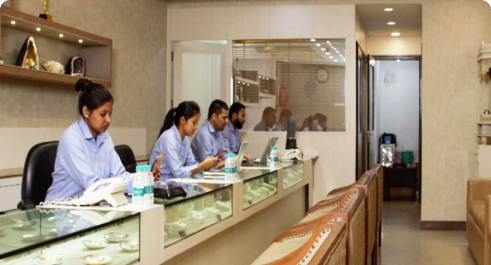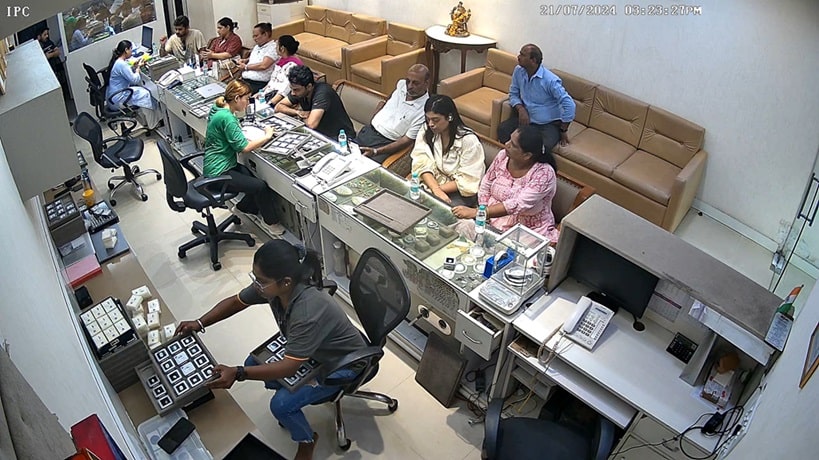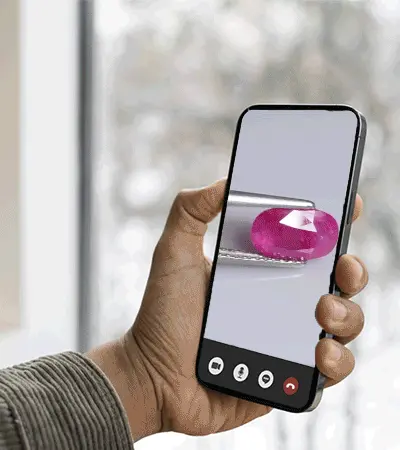India was the first place where diamonds were mined.
India's scriptures have had mentions of diamonds for centuries. Texts as ancient as Kautilya's Arthashastra speak of the diamond trade in India. Not only that but treasures discovered in the vaults of ancient Indian temples consisted of several diamonds. They have been a part of India's history and culture for a long time; way before the rest of the world discovered them.
Diamond is the astrological gemstone corresponding to the planet Venus, the brightest to shine in the sky after the moon and the sun. It is the birthstone for people born in April. It is one of the nine major astrological gemstones i.e. part of the navaratna.
But, and there is a big pause here, diamonds are extremely expensive. Not everyone can afford diamonds. Also despite their durability, the effects won't last forever, and they need to be replaced.
So people look for substitutes. White sapphire is an astrological substitute for diamonds. Not only that, but it is also worn instead of diamonds because it is equally brilliant and looks just like a diamond.
So if you want to buy white sapphire online, you can get it from one of the top gemstone suppliers like Brahma Gems.
Is there a diamond AND white sapphire substitute? Yes. When you ask reputed gemstone suppliers or visit a gem shop in Delhi or elsewhere, they'll tell you the alternatives are Zircon and cubic zirconia.
WHAT EXPERTS SUGGESTS FOR SUBSTITUTE OF WHITE SAPPHIRE OR DIAMOND
Although zircon and cubic zirconia are often confused as being the same, they are anything but the same. To the naked eye, they appear the same.
However, zircon and cubic zirconia are two vastly different diamond & white sapphire alternatives. Chemically, optically, and structurally the two gemstones are very dissimilar.
Here' we'll explore how these two are different and how they can help you.
Zircon VS. Cubic Zirconia: A deep dive
Many gemstone suppliers will try to pass off poor alternatives, not only for diamonds but also for zircon or cubic zirconia. That is why we're giving you a comparison between the two. Whether you want to buy cubic zirconia or natural zircon online or offline, it is best to know where each gemstone stands.
History & origin
Zircon is a natural gemstone. It is one of the oldest minerals on earth. The first specimen of zircon was found in Australia, and it is estimated to be about 4.4 billion years old. That's almost as old as the earth is. The gemstone is not very common, and although synthetic versions exist, they too are rare.
Cubic zirconia is not the same as Zircon. In comparison to Zircon, it is but a baby in the mineral world. The natural cubic zirconia was first discovered in the 1930s. However, because it was so rare, scientists started working on producing it synthetically. By the 1970s they perfected the synthetic version of cubic zirconia and thus began it's commercial journey into the world of astrology and jewellery.
Zircon is made of zirconium silicate, while cubic zirconia is made up of zirconium oxide. This is where the two gemstones get their similar names despite having completely different ingredients.
Durability
Cubic zirconia is quite durable. It ranks at 8 to 8.5 on the Mohs scale and is suitable for daily exposure. It doesn't chip, damage, or scratch easily. However, it tends to get cloudy over time, so it needs to be maintained. You may have to have the stone replaced eventually, but given it's low cost and ease of finding, that is rarely an issue.
Zircon looks like a diamond but is not as strong. On the Mohs scale, it ranks at 6 to 7.5. If your zircon gemstone has a hardness rating below 7, it can be easily scratched. Zircon is a brittle gem prone to cracking. It is sensitive to sunlight and UV in any shape, way, or form. When the gemstone is exposed to such lights, its colour fades.
Colour
Zircon occurs in a range of colours. The most popular colours are blue, pink, and yellow. While colourless zircon is its purest form, colorless zircon is the least valuable type of zircon. Green zircon is extremely valuable, highly coveted, yet extremely rare.
Certain zircon gems can exhibit pleochroism, meaning they can show different colours when viewed at different angles.
Cubic zirconia is created in the lab. So, the manufacturers can control the final product to the large extent. More often than not, cubic zirconia is created colourless to mimic the colour of diamonds. But some are also created coloured. For example, pink ice is a popular colour in the jewellery industry as is green, black, blue, orange, and red.
Both gemstones are available in a range of colours, and both can wonderfully mimic diamonds.
Clarity
Since cubic zirconia is lab-created, it almost always has excellent clarity. The gemstone is nearly always flawless. In fact, cubic zirconia's flawlessness is one of the tell-tale signs of it being man-made.
Zircon is generally either transparent or translucent. It is mostly free of impurities and has great clarity.
Zircon, being a naturally-occurring gemstone, has enhanced clarity that shines from within.
Value
Since zircon is a naturally-occurring, it is considered more valuable than synthetic gemstones like Cubic zirconia. A carat of zircon can sell from $75 to around $200 depending on quality factors.
Cubic zirconia does not have a lot of monetary value. Per carat, it costs around $20. To be truthful, cubic zirconia is often called a "fake" diamond.
Light performance
Zircon has extremely high sparkle, luster, dispersion, and a relatively high refractive index (RI) of 1.93 – 1.98. So, it plays beautifully with light shining bright as a brilliant and fiery stone, comparable to diamond.
Despite having a higher refractive index of 2.15-2.18, cubic zirconia cannot match the depth of brilliance of zircon.
So, which is the better alternative to diamond/white sapphire?
For astrological benefits: Zircon is better than cubic zirconia because it occurs in nature and is powered by it. It offers physical & mental strength, balance, abundance, wealth, and wisdom.
As an investment: Zircon is better as it is naturally-occurring and has a higher value.
For visionary brilliance: Both zircon and cubic zirconia can shine with brilliance.
The verdict
Despite the similarities, zircon and cubic zirconia are very different gemstones. Each gemstone has its own benefits and drawbacks. While Cubic Zirconia offers several admirable features such as affordability, durability and easy maintenance, the features offered by zircon surpass it in terms of value, light performance, astrological benefits, and color. As a substitute for diamond/white sapphire, the majority prefers zircon to cubic zirconia.
No matter which gem you choose, zircon or cubic zirconia or even white sapphire, the trick is to only buy from a trustworthy source like Brahma Gems, which sells certified gemstones online and offline.
 +919953660004
+919953660004 +18886144437
+18886144437 +44
8081965700
+44
8081965700




















